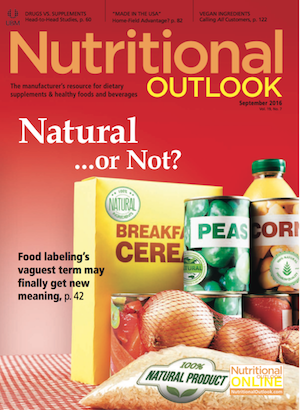Latest Sports-Nutrition Product Trends
Sports performance products are gaining fans everywhere, but some product types are proving more popular than others.
Photo © iStockphoto.com/dolgachov

Sports nutrition is the science of delivering targeted nutrition at precise windows of opportunity, enabling athletes and sportspeople to compete at their best. These days, sports nutrition extends far beyond strength trainers (weightlifters, bodybuilders) and endurance athletes (cyclers, runners, swimmers, etc.). Consumer demand is growing for all kinds of “performance” products-recreational, lifestyle, and everything in between. Here is a breakdown of some of the new-product activity happening globally and in the U.S.
Demand from U.S. and Beyond
The United States has always led the sports nutrition category but may now be ceding market share to other global entities. Between April 2015 and April 2016, the U.S. still accounted for a significant 30% of global sports nutrition new-product launches. Note, however, that this was down from 45% five years previously. Indeed, customers in other parts of the world, particularly Europe, are interested in sports nutrition now. Expect this trend to continue in the coming years.
Sports Powders
Traditional sports powders still dominate the arena. In the 12 months ending April 2016, powders accounted for nearly 58% of total global new-product sports nutrition launches, and as much as 64% of launches in the United States.
Despite being a category mainstay, powders must also compete with other, more convenient ready-to-use sports nutrition products, including ready-to-drink (RTD) beverages. As a result, sports-powder marketers are working harder than ever to make the powder format more convenient for users, going beyond traditional bulk tubs and into portable packaging like pouches. In addition, powder products are embracing new ingredient compositions and new flavors, such as the dessert and cookie-style flavors trending in the broader food and drinks market.
Sports Bars
Sports bars came in second. Globally, sports bars accounted for 13.6% of total global sports nutrition new-product launches and nearly 12% of launches in the United States.
The high-protein trend in the food and drinks industry is growing in sports bars, too. Protein is now a key marketing claim for sports bars. Nearly 85% of global sports bar launches, and up to 90% of U.S. sports bar launches, featured an “added protein,” “high in protein,” or
“source of protein” claim.
High-protein claims are also popular in the general nutrition bars market, indicating that protein bars have graduated from being specialized products for endurance and performance athletes to becoming mainstream products for general consumers seeking protein’s additional benefits like satiety, weight management, muscle building, and increased energy. Forty-three percent of mainstream cereal and energy bar launches in the United States featured protein claims.
Launch activity is happening everywhere within bars: whey bars, nutrition bars, Paleo bars, and other protein-rich bars. In spring 2016, one of the pioneers of the sports and energy bars market, Powerbar (now owned by Post Cereals), relaunched its U.S. sports bars range with new products advertising ideal macronutrients, lower sugar, whole-food ingredients, clean labels, and superior taste. The products target a range of consumer needs, from endurance to general fitness.
Capsules, Tablets, and Drinks
Sports supplements, mainly in the form of capsules and tablets, ranked third behind sports powders and bars. Sports supplements accounted for 9.9% of global sports nutrition launches. In the United States, where dietary supplements tend to be more popular in general, sports supplements accounted for 11.6% of new-product launches, just behind
sports bars.
In drinks, RTD sports drinks and protein sports drinks accounted for 6.2% and 4.6% of global launches, respectively. Other products like gels and chews claimed 7.8% of the market. In the U.S. specifically, RTD sports drinks clocked in at 5.6% of launches, while “other” products came in at 3.7% and RTD protein-based sports drinks at just over 3%.
Sports and performance drinks were the first sports nutrition products to go mainstream. Major U.S. soft drink brands like PepsiCo’s Gatorade and Coca-Cola’s Powerade were among the original pioneers. These brands continue to drive the market forward by introducing new flavors and product formats, plus high protein for casual users (such as Coca-Cola’s Core Power protein-rich dairy-based sports recovery beverage launched in 2012).
Coconut water is still growing as a natural isotonic alternative. Nearly 14% of U.S. RTD sports drinks Innova Market Insights tracked in 2015 featured coconuts, mainly in the form of coconut water but also including coconut flavors and ingredients. By contrast, in the non-sports-drinks market, coconut isn’t as popular. Excluding sports drinks, coconut ingredients were featured in just over 7% of soft drink launches and up to 12% of juice drink launches.
Promising Future
The sports nutrition market continues to diversify and reach out to new consumers. By including different sports, exercise regimes, and levels of activity, as well as different ages and genders, the opportunities are endless. Are you game?
Innova Market Insights is your source for new-product data. The Innova Database (www.innovadatabase.com) is the product of choice for the whole product-development team, offering excellent product pictures, search possibilities, and analysis. See what food manufacturers are doing around the world: track trends, competitors, ingredients, and flavors. In today’s fast-moving environment, this is a resource you cannot afford to be without.
Read more:
Dessert Flavors Rule in Sports Nutrition, Say IFT Exhibitors
Cocoa and Probiotics Getting In on High-Protein Trend
7 Vegan Dietary Supplement Ingredient Trends

Prinova acquires Aplinova to further increase its footprint in Latin America
April 7th 2025Prinova has recently announced the acquisition of Brazilian ingredients distributor Aplinova, which is a provider of specialty ingredients for a range of market segments that include food, beverage, supplements, and personal care.

























